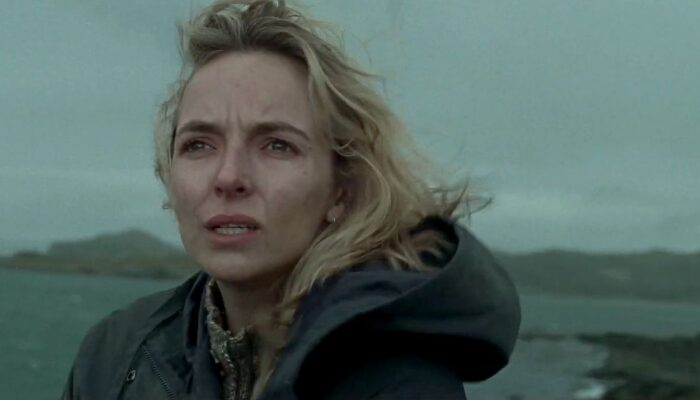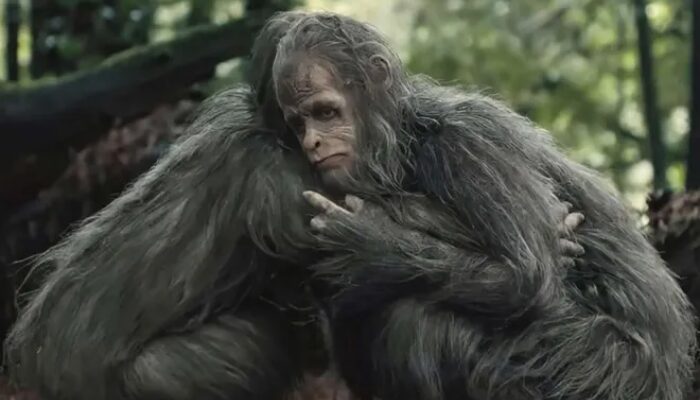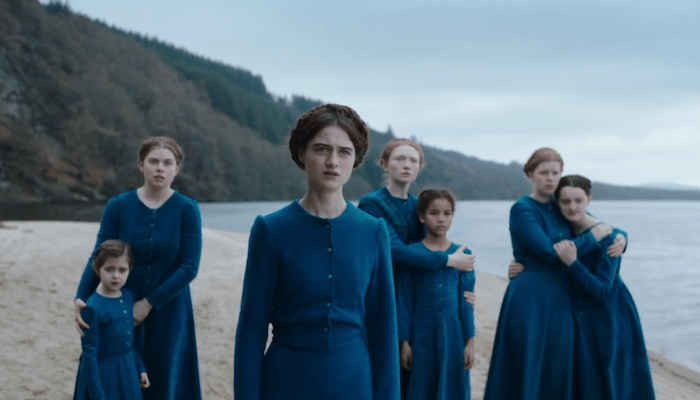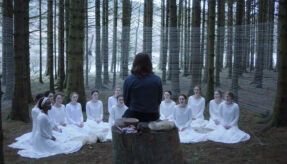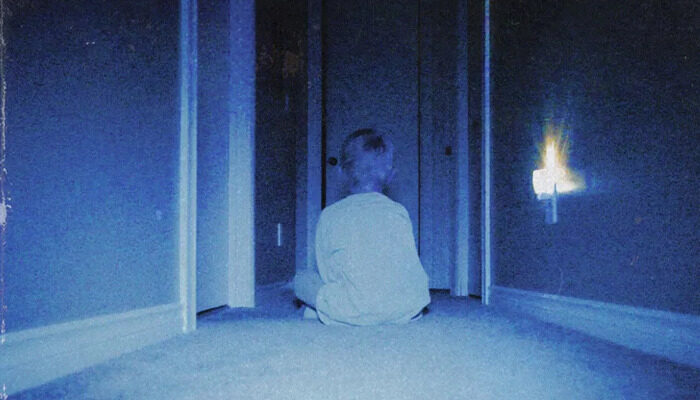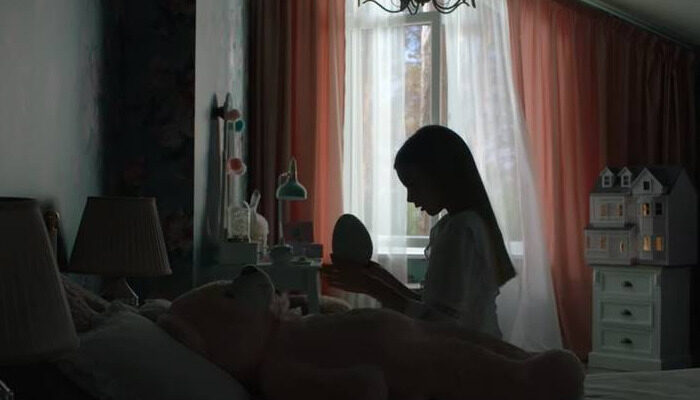Film Review: THE OTHER LAMB (2019): A Dull Cult Movie That Under-Utilizes Its Premise For Fleeting Freakouts And Misplaced Shock
The Other Lamb Review
The Other Lamb (2019) Film Review, a movie directed by Malgorzata Szumowska, and starring Raffey Cassidy, Michiel Huisman, Denise Gough, Mallory Adams, Kelly Campbell, Eve Connolly, Isabelle Connolly, Alibhe Cowley, David Fawaz, Jane Herbert, Irene Kelleher, and Charlotte Moore.
Malgorzata Szumowska’s The Other Lamb is a tale about breaking out of oppressive mindsets and reclaiming your own autonomy. Unfortunately, despite its beautiful construction, it’s so blunt in its execution that it falls into triviality.
Deep within the forested moors of rural Europe (assumedly the British Isles or Ireland), a stoic, long-haired man known as the Shepherd (Michiel Huisman) keeps a harem of loyal women followers working for him on a small commune. Separated by red and blue dresses to denote his “Wives” and “Daughters”, respectively, the “Flock” solemnly go about the tasks of raising the livestock, cooking the meals, collectively caring for the youngest amongst them, and serving the Shepherd’s intimate demands. The Wives and Daughters see the Shepherd as their route to eternal salvation, and submit to his will in order to achieve it.
One of the Shepherd’s oldest Daughters, Selah (Raffey Cassidy), takes pride in her piety and adheres to her daily tasks with much fervor. As she is on the cusp of adolescence, she is granted more responsibilities to prove her maturity. But as her body starts to go through changes of its own she begins to question the sanctity of the Shepherd’s teachings, particularly in how unfairly weighted they are against her and the rest of the women. She also can’t shake the feeling that the Cursed Wife (Denise Gough) might not be as bad as she’s been told, and she’s driven to interact with her more even at the expense of her own Flock standing.
After both a tragic accident and a run-in with outside forces, the Shepherd makes the abrupt decision to relocate the Flock elsewhere. The cross-country trek pushes many to their physical limits, and tensions slowly rise to a boiling point. After one hardship too many, Selah must decide if she will continue to submit to the Shepherd’s word or if she will take the Flock in a wholly new direction.
The Other Lamb is very reminiscent of Szumowska’s Elles, both in its eerie style and lack of discernible message.
The two films focus on various versions of modern-day female exploitation: one happening right under our noses within the urban landscape, and the other tucked away in the idyllic European countryside. Szumowska doesn’t submit to the male gaze in either film but she doesn’t shy away from exploring the female body, either. Rather, she showcases how men use their power of influence to strip women of their autonomy, thus leaving the women divorced from their bodies and feeling alien unto themselves. With such an approach, Szumowska morphs The Other Lamb’s bildungsroman archetype into a vessel for personal reclamation – which, if not wholly revolutionary, does still feel like a very fresh take.
But very much like Elles, The Other Lamb doesn’t have much else to say beyond a heavy-handed allegory.
Elles morphs its titillating dive into the world of sex work from a liberating tale to a cautionary one, inconclusively ending with a vague condemnation of scummy men rather than a more insightful critique of patriarchal structure. The Other Lamb has the aforementioned hints of the reclamation of feminine autonomy (which do tie into a broader questioning of the power dynamics between the Wives, Daughters, and Shepherd on the whole) but it’s so blandly displayed that it runs its thematic course long before the credits start to roll.
The jealousy of the cult members towards each other is so painfully direct, with rote stares during bizarre sensual acts meant to spur the others into lashing out. The “impurity” of menstruation is a provocative topic that’s dropped as soon as it’s brought up, acting more like thematic spice rather than dialectical insight. The presence of the white strings is never elaborated on and barely even acts as a MacGuffin, but that’s okay because we get that the egregious symbolism in that it’s like a net meant to ensnare and trap its prey. Cool cool, duly noted.
Such a stilted approach leaves Szumowska’s capable cast without much to do. Cassidy and Gough do their best with what little they have, but that still isn’t all that much. It’ll be argued that that’s an intentional approach, as these cult members have been so downtrodden and brainwashed that they can’t/won’t muster up excessive emotions out of lack of ability to do so and/or fear of retribution. But that obviousness undermines the subversive and insidious nature of cult-like groupthink in general – leading to a missed opportunity at a metaphorical presentation of the narrative while also denying the audience much intellectual cud to chew on past the first bite. Minimalism works if the backstory’s loud enough to project itself through the actions, and I don’t know if Szumowska’s direction nor C.S. McMullen’s script was quite up to that task.
Szumowska attempts to obscure her obviousness through excessive art-house constructions, but doing so has the opposite effect by further amplifying the shallowness of it all. I’m down with creepy vibes and an unshakeable, inescapable sense of dread, but jump-cuts to maggot-rotted corpses can only carry that so far before it starts to get a bit grating.
Even Michal Englert’s gorgeous cinematography that brings forth the eerieness of the Irish moors feels incorrectly utilized, with Szumowska and editor Jaroslaw Kaminski being a little too eager to cram every Zsigmond-esque zoom-in that they can into the final edit. (Although in fairness to Kaminski, the final act picks up with a lot of great editing that really hits the ambiguity that I’m assuming Szumowska was striving for.)
In fairness, I haven’t seen any of Szumowska’s films in the interim – including In the Name Of, Body, and Mug, all of which were apparently jury favorites at Berlinale – so far be it from me to write her off any time soon. And I don’t deny her tenacity at discussing uncomfortable topics via horror-adjacent vibes. But I think she needs to expand her direction beyond flashy edits and stop coasting on taboo topics alone if she wants her films to have more lasting impacts.
The Other Lamb might work for you if you’re a non-discerning cult fanatic, or someone who finds thrills in that Zentropa vein of “elevated horror”. But for those looking for something more substantial, a documentary on a real-life cult might do the trick instead.
What could’ve been a black sheep is instead just another one of the flock.
Rating: 5/10
Leave your thoughts on this The Other Lamb review and the film below in the comments section. Readers seeking to support this type of content can visit our Patreon Page and become one of FilmBook’s patrons. Readers seeking more film reviews can visit our Movie Review Page and our Movie Review Pinterest Page. Want up-to-the-minute notifications? FilmBook staff members publish articles by Email, Twitter, Instagram, Tumblr, Pinterest, and Flipboard.
Related Articles
FilmBook's Newsletter
Subscribe to FilmBook’s Daily Newsletter for the latest news!




